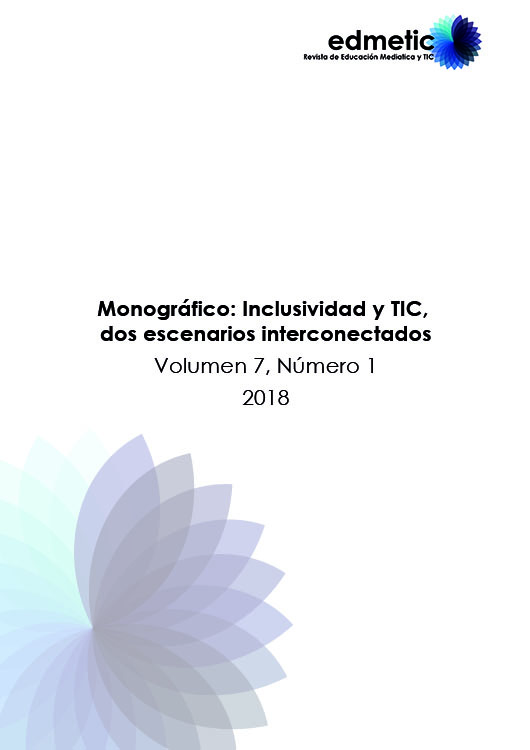Pensamiento computacional: rompiendo brechas digitales y educativas
Main Article Content
Abstract
Downloads
Article Details
TRANSFER RIGHTS AND COMMITMENTS TO EDMETIC, REVISTA DE EDUCACIÓN MEDIÁTICA Y TIC
E-ISSN: 2254-0059
The undersigned author(s) of article entitled:
- Transfer to EDMETIC, Revista de Educación Mediática y TIC publishing rights of the article mention before. The magazine will have the right to publish in any format or media this article.
- The author(s) claim that this article is original and which has not been published before in any format and wasn´t submitted for evaluation to another publication.
- The author(s) claim that this article has the copyright´s permissions for publication
- The author(s) accept the changes to the contents on the review, and changes in the style of the manuscript by the Editorial Board of EDMETIC, Revista Educación Mediática y TIC.
- The author(s) declare that they have complied with the ethical principles of research.
- The author(s) not be subject to personal or business association that involves a conflict of interest with article presented
- El author(s) undertakes to give the primary sources of information, if requested.
Date:
Author(s) names and signatures (1):
(1) Fill the form and send to: revistaedmetic@uco.es
References
BASOGAIN, X., OLABE, J., RICO, M., RODRÍGUEZ, L., & MIGUEL, A. (2017). Pensamiento computacional en las escuelas de Colombia : colaboración internacional de innovación en la educación, 12. Recuperado de http://recursos.portaleducoas.org/publicaciones/pensamiento-computacional-en-las-escuelas-de-colombia-colaboraci-n-internacional-de
CABERO, J. (2004). Reflexiones sobre la brecha digital y la educación. Tecnología, Educación Y Diversidad: Retos Y Realidades de La Inclusión Digital, 23–42. https://doi.org/10.1017/CBO9781107415324.004
CABERO, J. (2007). Nevas tecnologías aplicadas a la educación. Madrid: McGraw-Hill.
CRUZ, M., & RAMA, C. (2016). La educación a distancia y virtual en Centroamérica y El Caribe. Republica Dominicana: Ediciones UAPA.
CSTA.ISTE. (2011). Computational Thinking in K–12 Education leadership toolkit, 43.
GARCÍA, L. (2004). Blender Learning, ¿enseñanza y aprendizaje integrados? Boletín Electrónico de Noticias de Educación a Distancia de La CUED, 1–4. Recuperado de http://e-spacio.uned.es/fez/eserv/bibliuned:333/editorialoctubre2004.pdf
OBAYA, A. (2003). El construccionismo y sus repercusiones en el aprendizaje asistido por computadora. ContactoS, 48, 61–64.
OECD. (2001). Understanding the Digital Divide. Industrial Law Journal, 6(1), 52–54. https://doi.org/10.1093/ilj/6.1.52
PAPERT, S. (1984). Desafío a la mente: computadoras y educación. Buenos Aires: Ediciones Galápago.
PAPERT, S. (1999). Logo Philosophy and Implementation. Lcsi. https://doi.org/10.1111/j.1468-0149.1994.tb02396.x
SERRANO, A., & MARTÍNEZ, E. (2003). La brecha digital: mitos y realidades. México: Editorial UABC.
Wing, J. M. (2006). Computational Thinking. Communications of the ACM, 49(3), 33–35. https://doi.org/10.1145/1118178.1118215
